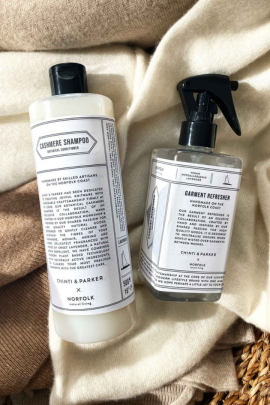The warmer weather is welcomed by the majority of us. After a long, cold winter, the sight of blue skies and the temperatures reaching the teens can lift those winter blues. But rising mercury brings its own problems, namely the flutter of papery wings coming to infest our wardrobes and nibble on our treasured garments. Take action and safeguard your collection by following these steps.
HOW TO GET RID OF CLOTHES MOTHS



4. Check your items
Carefully, examine all your items for damage. If you do find it, don’t despair just yet. Many small holes can be repaired, even in fabrics such as cashmere - we recommend sending damaged cashmere knits to the Love Cashmere Care Service in Hawick, Scotland. Check if repairs can be made before tossing out.
Next, wash or dry clean all items that were stored inside, including upholstery and curtains. Sub-zero temperatures can also kill larvae - store clothes in plastic bags and freeze them for 48 hours before washing.
When you return them to your wardrobe, take preventative steps. During the summer months, rotate your most delicate winter knits and cashmere into high-quality garment bags or boxes - remember to line with anti-moth paper. We’ll talk more about deterrents next, but as a first step, swap plastic hangers for those made of cedarwood. Not only do they allow your clothes to hang better, but they naturally discourage pests.

5. Use natural deterrents
Of course, there are chemical sprays out there that kill and deter insects, but natural deterrents are better for both the environment and your clothes. Lavender sachets and cedar balls are great alternatives to mothballs, but don’t allow them to touch your clothes, as they can leak oils and stain. You can also invest in anti-moth paper to line your drawers and storage boxes, as the warmer months approach.
6. Vet new additions thoroughly
If you are trying to adopt more sustainable shopping habits, you may introduce some second-hand or vintage pieces. Freeze-treat or clean these pieces before slotting them into your rotation, and have true vintage pieces dry-cleaned first, as they can often carry unwanted visitors.
Unfortunately, moths can reinfest if you are not careful. Every year - when temperatures start to rise - be vigilant about the environment in which your clothes live. Keep rooms and wardrobes well-ventilated, and regularly inspect your clothes for holes or signs of damage. With the right level of care and attention - including proper washing, storage and preventative measures - you shouldn’t have to worry about these winged fiends too often.



















